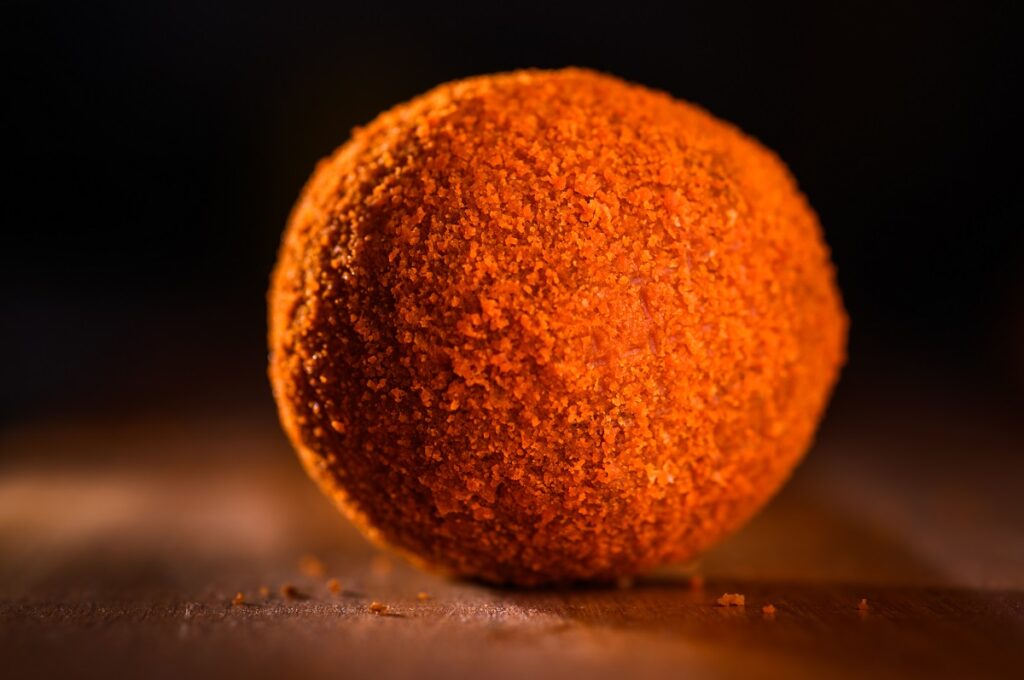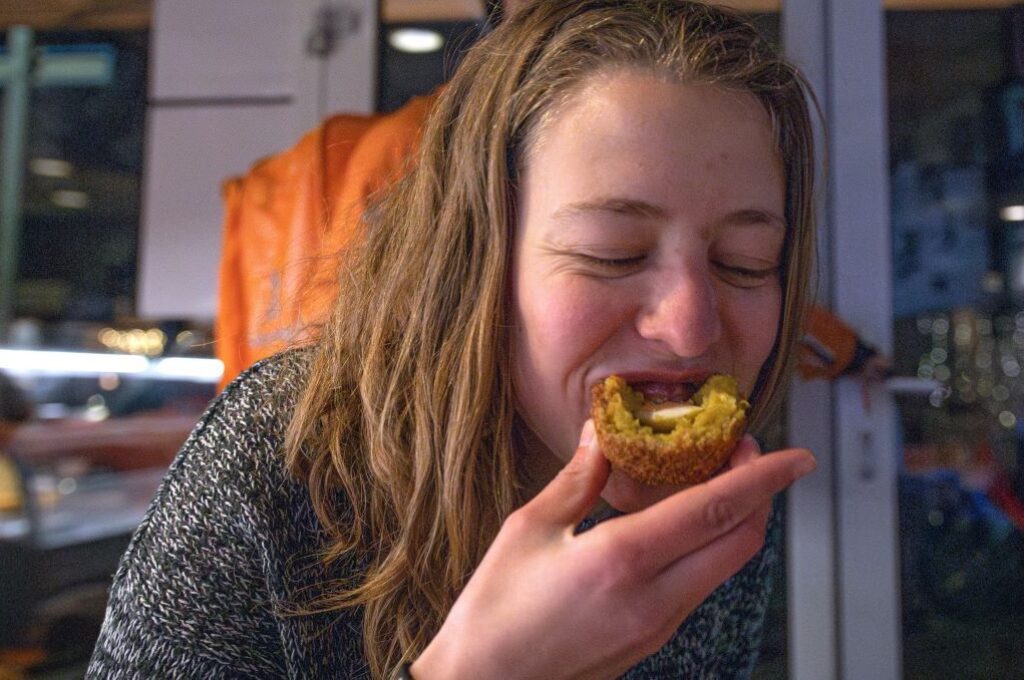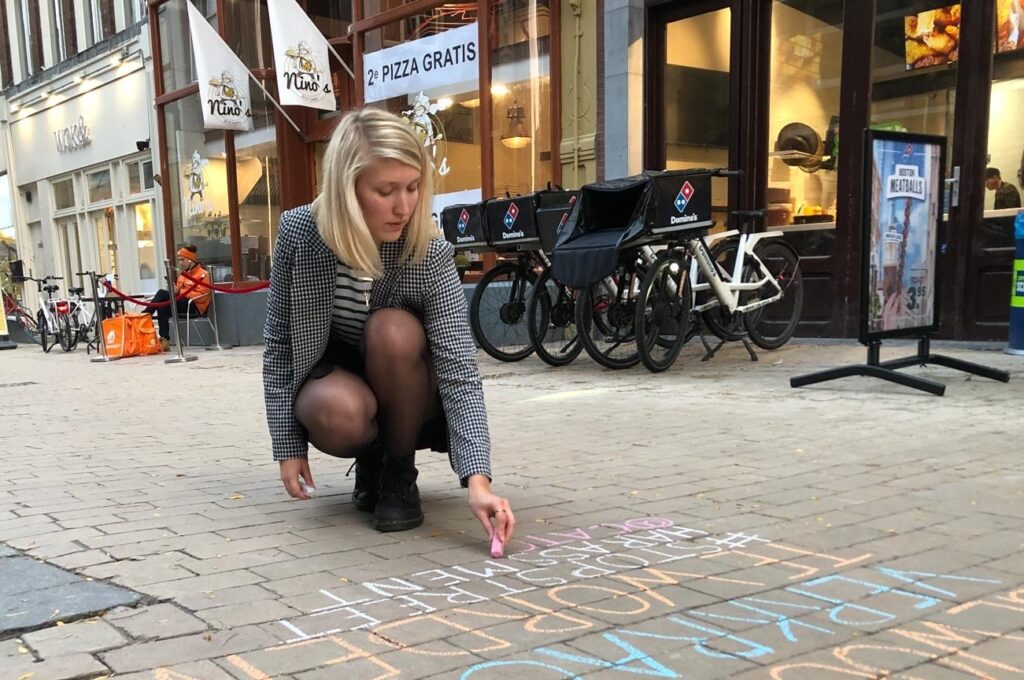The Hanze wants to cut their food waste in half by 2030. The canteens are doing their best and their visitors can help.
‘We have been trying very hard in recent years to reduce waste’, says Sylvia Tol, who has been working in the Wiebenga canteen for over twenty years. ‘We used to fill many sandwiches in the morning. During the day we would make extra. Nowadays we don’t do that anymore.’ When the sandwiches run out, the canteen staff set out bread slices and toppings separately. When they are not sold, the toppings can go back to the refrigerator. ‘We don’t throw away sandwiches either. We make crostinis out of them the next day. They go very well with the soup.’
Sylvia’s approach does not come out of the blue. Curbing food waste is Hanze policy. The executive board pledges to cut food waste in half by 2030, the Strategic Plan 2021-2026 states in so many words.
‘Maybe Hanze should think ahead a bit better’
According to research by the Voedingscentrum (the Dutch equivalent of the British Food Standards Agency) the products most often wasted in the Netherlands are fruit, bread, pasta, dairy, potatoes and vegetables. These are exactly the products that tempt you when you walk into the Hanze canteens. So Sylvia Tol and her colleagues play an important role in combatting waste. The head office of Eurest, the caterer Sylvia works for, also keeps a close eye on waste, she says. As far as she is concerned, Hanze should think ahead a bit better. ‘Sometimes students are having days off from school. When people do not inform me about that in advance, I have too much fresh produce on display.’
Eurest collaborates with the app Too Good To Go, where students can pick up a bag of leftovers for almost peanuts. ‘But that doesn’t always work’, says Sylvia. ‘At the end of the day, there is often nothing left to hand out.’
Soft drinks have a very long shelf life, so how can they go past their expiration date?
At the Willem-Alexander Sports Centre, location manager Marieke Maas does offer Too Good To Go packages every day. Or she assembles a discount promotion to tempt students to buy products that are about to expire. ‘Yesterday I made a 1+1 free promotion for cans of Coca-Cola Zero. Then they suddenly went very fast.’
Soft drinks have a very long shelf life, so how can they go past their expiration date? Some soft drinks are hardly sold at the Hanze, Marieke explains, but she offers them anyway. That is due to the caterer’s contracts. ‘They have to offer certain drinks, because they have agreed that with the supplier.’ Marieke enjoys making sure everything is sold on time. Inventing promotion actions, that’s great fun.
Fighting food waste also means selling no, says Marieke. Just like Sylvia she does not prepare fresh sandwiches after noon. Students and teachers then have to make do with what she has left. Students are always very understanding, she says. ‘Although sometimes they just decide to not buying anything.’
‘Sports people eat everything, to the very last crumb’
She does notice some typical consumer behaviour she still has to find a selling trick for. Marieke points to the last meat roll under the yellow light of a warming lamp. ‘If there is only one thing lying around, our guests often leave it.’
Eurest also cater for meetings and other activities. What about those? ‘Sports people eat everything, to the very last crumb’, laughs Marieke. ‘And otherwise they take their leftovers to their colleagues. The trays I get back are usually empty.’
‘Everything goes back into the fridge, it will be good for another two days’
Is really nothing thrown away? Well… sometimes there is no other option left, Marieke says. That has to do with the rather strict legal regulations for food safety in the Netherlands. Food that has been served must be thrown away after two hours. That applies, for instance, to muffins left over after a meeting. But, even without the legislation, Marieke would not give them away. ‘No, you really can’t. Someone might have spit on them.’
But of the freshly displayed products in her canteen, nothing goes into the bin today. Marieke looks critically at the salad buffet. ‘Everything can go back into the refrigerator later. It will be good for another two days.’ She points to a spoon with a blob of pesto sticking to it. ‘But I won’t be saving this, that just goes away.’
Ruben Wildeboer, a student of Entrepreneurship and Retail Management often collects a bag from the canteen. ‘At least twice a week.’ Today, he takes a box with him to a meeting with fellow students. Satisfied, he shows off the contents. A banana, a chocolate bar, a couple of biscuits, two protein drinks and that meat roll Marieke had her doubts about. ‘Nice cheap snacks’, Ruben grins. And yes, he admits, it also helps to avoid food waste.
Yolanda has a smart purchasing strategy, so she has no leftovers
At DeliYo in the Van DoorenVeste building, they also throw away as little as possible, says owner Yolanda van der Kroft. She has been approached several times by Too Good To Go, but this lunchérie does not use the app. There is not enough left over to fill bags, according to Yolanda, who has a smart purchasing strategy. She keeps her shopping list as short as possible by buying just a few different types of ingredients. ‘For example, I need lettuce for sandwiches, but also for salad.’ Buying the same type of lettuce for both reduces the chances of having lettuce left over.
In addition, Yolanda only buys for Monday to Thursday. Friday is leftover day. This is when DeliYo staff get creative with leftover products. ‘But even then everything is still fresh’, she assures. ‘From leftover vegetables we make salads or soup, for example.’
What Yolanda enjoys most is inspiring teachers and students. They should waste less. Because, as it turns out, households still waste the most food.
What can you as a consumer do yourself to prevent food waste at the Hanze? Choose the last roll or muffin, finish the last sauce at the salad buffet or see if you can score a Too Good To Go bag. And even simpler: empty your own lunch box before you run off to the canteen with your appetite.
Foto (fragment): Anita Jancovic









